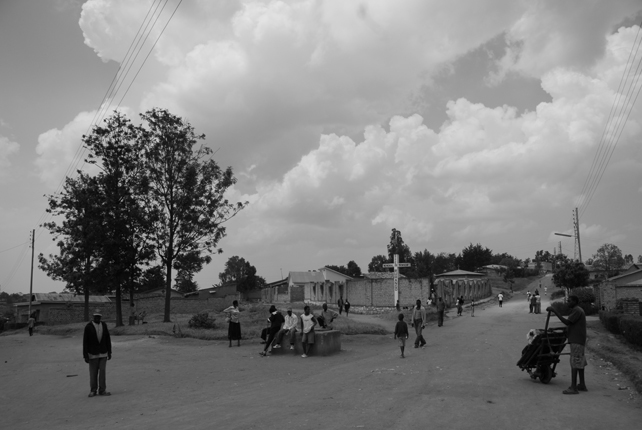
|
The Ruhango site is located in Southern Province. Click on the image for a slideshow of photographs. All photographs © 2002-2008 Jens Meierhenrich. |

|
The Ruhango site is located in Southern Province. Click on the image for a slideshow of photographs. All photographs © 2002-2008 Jens Meierhenrich. |
A dozen miles from Nyanza, the former royal seat of Rwanda, was a field like any other found in these parts of rural Rwanda. When thousands of men, women, and children were killed in the surrounding region during the spring of 1994—in Ruhango town, Kigoma, the forest Mugejuru, Gitisi, Tambwe, Ntongwe, Kinazi—the site of what is now the Ruhango memorial to victims of genocide remained a field of sorts, though several people were killed here in full view of the former sous-prefecture office and nearby residences.
The memorial one sees today was established five years after the genocide as a resting place for skeletons and bones that had been surfacing on the nearby hills in all the localities mentioned above. And though bones continue to emerge on the hillsides, there is a problem: Extensive though it is—55 meters long and at least 11 meters wide—Ruhango is full. Bodies are therefore taken for burial three miles away on the grounds of the Kigoma memorial.
These days there is plenty of foot traffic past the Ruhango memorial, though visitors cannot enter because the gate is locked. The structure is tidy and evidently well maintained. Seven mass graves rimmed by cement troughs are topped with green grass, and a circular grave in the middle is covered with limp bouquets of faded purple flowers wrapped in cellophane. Over the door of the adjacent charnel house, inside of which is a single wooden coffin and a large cross the size of a man, is a Kinyarwanda word in black lettering: Ntituzabibgirwa (“Let us not forget them”).
Copyright © 2010 Jens Meierhenrich. All rights reserved.